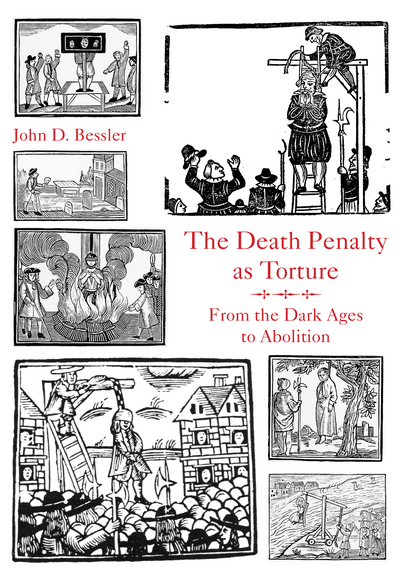The Death Penalty as Torture
From the Dark Ages to Abolition
2017
Tags: Comparative Law; Constitutional Law; and Legal History
460 pp $65.00
ISBN 978-1-61163-926-1
eISBN 978-1-61163-972-8
The Death Penalty as Torture: From the Dark Ages to Abolition was named a Bronze Medalist in the World History category of the Independent Publisher Book Awards and a finalist in the Eric Hoffer Book Awards (2018).
During the Dark Ages and the Renaissance, Europe's monarchs often resorted to torture and executions. The pain inflicted by instruments of torture—from the thumbscrew and the rack to the Inquisition's tools of torment—was eclipsed only by horrific methods of execution, from breaking on the wheel and crucifixion to drawing and quartering and burning at the stake. The English "Bloody Code" made more than 200 crimes punishable by death, and judicial torture—expressly authorized by law and used to extract confessions—permeated continental European legal systems. Judges regularly imposed death sentences and other harsh corporal punishments, from the stocks and the pillory, to branding and ear cropping, to lashes at public whipping posts.
In the Enlightenment, jurists and writers questioned the efficacy of torture and capital punishment. In 1764, the Italian philosopher Cesare Beccaria—the father of the world's anti–death penalty movement—condemned both practices. And Montesquieu, like Beccaria and others, concluded that any punishment that goes beyond absolute necessity is tyrannical. Traditionally, torture and executions have been viewed in separate legal silos, with countries renouncing acts of torture while simultaneously using capital punishment. The UN Convention Against Torture strictly prohibits physical or psychological torture; not even war or threat of war can be invoked to justify it. But under the guise of "lawful sanctions," some countries continue to carry out executions even though they bear the indicia of torture.
In The Death Penalty as Torture, Prof. John Bessler argues that death sentences and executions are medieval relics. In a world in which "mock" or simulated executions, as well as a host of other non-lethal acts, are already considered to be torturous, he contends that death sentences and executions should be classified under the rubric of torture. Unlike in the Middle Ages, penitentiaries—one of the products of the Enlightenment—now exist throughout the globe to house violent offenders. With the rise of life without parole sentences, and with more than four of five nations no longer using executions, The Death Penalty as Torture calls for the recognition of a peremptory, international law norm against the death penalty's use.
Editorial Reviews
"Most people don't like torture and won't tolerate it. But right now, many people don't think about the death penalty as torture. The 'cruel and unusual' moniker is an important legal concept and one highly relevant to the ongoing Eighth Amendment debate, but if the death penalty is considered under the classification of 'torture' you reframe the conversation."
—John Bessler, from his interview with Death Penalty Focus
"Since I am a law librarian, and have read about capital punishment, I thought that I knew much about the topic. This book has shown me that I did not. Whatever your beliefs on capital punishment, this book should be in your library."
—Francis X. Norton, Jr., Southeastern Law Librarian
"The volume in its entirety weaves its parts seamlessly together. That said, each well-documented chapter may be read individually, still benefitting the reader, as each bears sufficient cross-reference of the major themes and facts. The volume's index is detailed, making The Death Penalty as Torture an accessible and helpful resource for practitioners. The volume will open the eyes and minds of those with an interest in capital punishment, those questioning the use of that irrevocable punishment in the name of all citizens, and capital case practitioners looking for inspirational and historical information with which to push the boundaries of capital litigation."
—Criminal Law Bulletin


